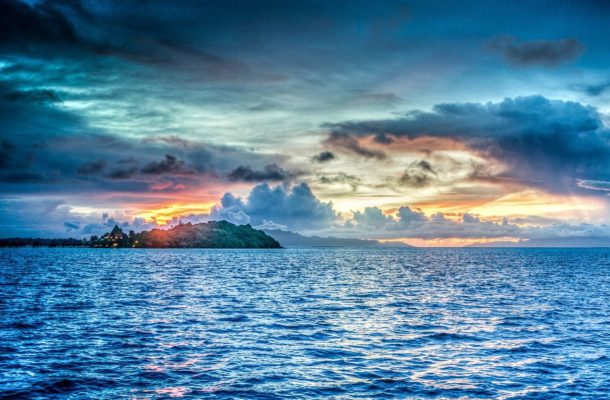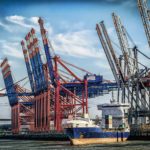Pacific opportunities beckon Australian mid-sized firms

The International Centre for Democratic Partnerships, a non-profit entity created by Global Access Partners, was chosen by the Australian Government to run its new Pacific Connect programme to develop closer relationships with emerging business, social and political leaders in the region.
The Pacific is Australia’s ‘back door’, but the region drew little political attention beyond emergency provisions for natural disasters and social, ethnic and political flare-ups before the Turnbull administration turned its attention towards national security.
The Pacific’s small island nations have long been plagued by political corruption and instability, endemic social problems and sluggish economic growth, dissuading Australian firms from developing trade relationships, but better links in every sphere must now be pursued to improve the situation.
The increasing economic, diplomatic and military vigour of an ever more belligerent China is making itself felt in the region, as it is elsewhere, but a new fleet of frigates and patrol vessels will do little to improve national security if China uses its economic might to purchase hearts and minds as well as resources in the vast ocean to our east.
Mutually beneficial economic ties, rather than greater aid spending, are the best way to support development and building closer relationships with emerging leaders in the region, and demonstrating the benefits of democratic politics, social inclusion and free market growth, will not only improve the lives of Pacific citizens and safeguard Australian security, but offer new opportunities for mid-sized Australian firms to trade and expand.
While the rest of the world suffered a turbulent and at times foreboding 2017, there is growing optimism about the future of the Pacific island nations. While they have long suffered from their extreme isolation from the rest of the world, their relative proximity to Asian nations hungry for natural resources means that new economic opportunities are emerging all the time.
In ‘Catching the Wave – Doing business in the Pacific, the ANZ bank notes that the ‘world wants what the Pacific has to offer’ in terms of the region’s huge natural resources and some of the most beautiful and unspoilt tourist destinations on the planet.
At a time when the rest of the world is embracing, and being transformed by, digital trade enabled by ubiquitous broadband and mobile connectivity, the Pacific is also improving its digital links, with new submarine cables planned for Papua New Guinea and the Solomon Islands.
The region’s improved connectivity not only opens avenues for digital trade, but makes the region a much easier place to conduct all forms of business in. The islands can now communicate with the world – and each other – in ways which simply weren’t possible before.
The Pacific in the ‘Asian Century’
The Pacific is poised to play an important economic – and perhaps political and military – role in the current ‘Asian century’. With Asia now the powerhouse of global manufacturing and growth, the Pacific Islands have seen their trade flows with Asia explode from just $US1.7 billion in 2000 to almost $US10 billion in 2013, and the rate of growth continues to climb.
Just as Australia enjoyed a 15 year mining boom based on commodity exports to Asia, so the Pacific has benefited as well, but while Australia’s bonanza is beginning to plateau, the potential of smaller Island nations, and the vast stretches of sea they offer access to, is still to approach its potential.
The region is characterised by extremes of scale, from its vast stretches of boundless ocean to the tiny and remote island nations which call it home. Although the region is often seen as a homogenous whole, it is actually a patchwork of highly distinct and unique cultures and the particular needs and circumstances of each must be properly understood for successful links to be made and maintained.
The range of resources and opportunities in the region defies brief description but some of the main highlights are outlined below.
Natural resources
The Pacific’s natural resources include long standing and significant oil, gas and mining projects in Papua New Guinea and Timor Leste, with the later emerging from decades of Indonesian occupation to become an economic power in its own right. The scale of some projects is immense, on a par with any in Australia. ExxonMobil has developed a $US19 billion Liquefied Natural Gas project in PNG, for example with the potential to produce 6.9 million tons of LNG per year.
A partnership between Total, InterOil and Oilsearch is developing another LNG scheme of similar scale in the same country, generating significant downstream opportunities for smaller Australian suppliers of mining equipment and support services looking for new markets as Australian mining development slows.
Infrastructure
A wide range of infrastructure development is underway or planned in the region, from major cable and road schemes to boost national capabilities to smaller town and village projects to improve people’s lives. These schemes are supported by direct aid from governments such as Australia, aid agencies, the World Bank and other international bodies as well as Pacific island governments themselves.
Some of the most significant infrastructure projects have been commissioned to support commercial schemes to extract natural resources, many of which are in relatively remote areas and require their own new roads and energy supply.
The region is in dire need of better essential infrastructure to empower continued development and Australian mid-sized firms are ideally placed to sub-contract work on water, road, sanitation, airport and energy schemes.
The New Zealand government recently committed $NZ1 billion in development assistance to the Pacific region over the next three years while Australia will spend $AU 1.1 billion in 2017/8. Although Australia’s foreign aid spending will be frozen for two years from 2018, its support for major projects in PNG and the region as a whole will continue to be a major factor in the region, opening opportunities for Australian firms.
Tourism
Tourism in the Pacific is booming, with Fiji and other popular holiday destinations at full capacity. Tourism has always been important to the Pacific but the trend towards simpler, eco-friendly adventure tourism from millennials in search of ‘experiences’ to post to Instagram has given it an additional boost through its reputation as one of the last ‘unspoiled’ areas on the planet.
Consumer goods
Although the Pacific’s population is relatively small, consumer goods have long been an important area of trade, with Australian firms exporting exporting foodstuffs and other consumer products to island nations.
Privatisation
Increasing moves to privatise state-owned assets in a number of Pacific countries such as Fiji present a range of opportunities to Australian firms. The privatisation of key infrastructure areas has been promoted to improve efficiency and service delivery as well as making local economies more competitive. Fiji’s privatisation of water, electricity and key transport assets such as ports and airports has encouraged its neighbours to examine similar steps.
Renewable energy
Many Pacific islands are turning to increasingly affordable and efficient means of renewable energy generation to reduce or even eliminate their historical reliance on expensive diesel-powered electricity. Australian firms with expertise in solar, wind and wave power can find new markets in Pacific islands eager to offer eco-friendly power to tourists as well as underline their concern about rising sea levels caused by global warming due to use of fossil fuels.
High-value consumer goods
As Pacific islands become more affluent and their middle class grows, opportunities to export high value consumer goods are increasing, particularly in the relatively wealthy French Pacific region.
Fisheries
Given the collapse in fish stocks around the world due to long standing over-fishing, the demand for new fishing grounds, particularly from Asian fishing fleets looking to meet the growing demand for high protein food at home, is intense.
The Pacific’s huge fisheries are an increasingly valuable resource, and their exploitation offers niches for Australian food producers to add value, while the need to protect them from illegal fishing and foreign intrusion has spurred the ordering of new patrol vessels, built in large part by Australian firms.
Services
The service sector already dominates economies in the developed world and economic growth in the Pacific is similarly driving demand for project management, accounting, engineering, surveying and other professional services which Australia is well placed to provide. Fiji is emerging as a major service centre for the Pacific region as a whole and greater digital connectivity should enhance the opportunities for Australian firms.
As part of our First 5000 – Have your Say initiative, we invite you to answer the following question:
How can we build stronger business relationships between Australia and the Pacific?
Post a comment on First 5000 – Have your Say on LinkedIn today or email editor@first5000.com.au with your story.








